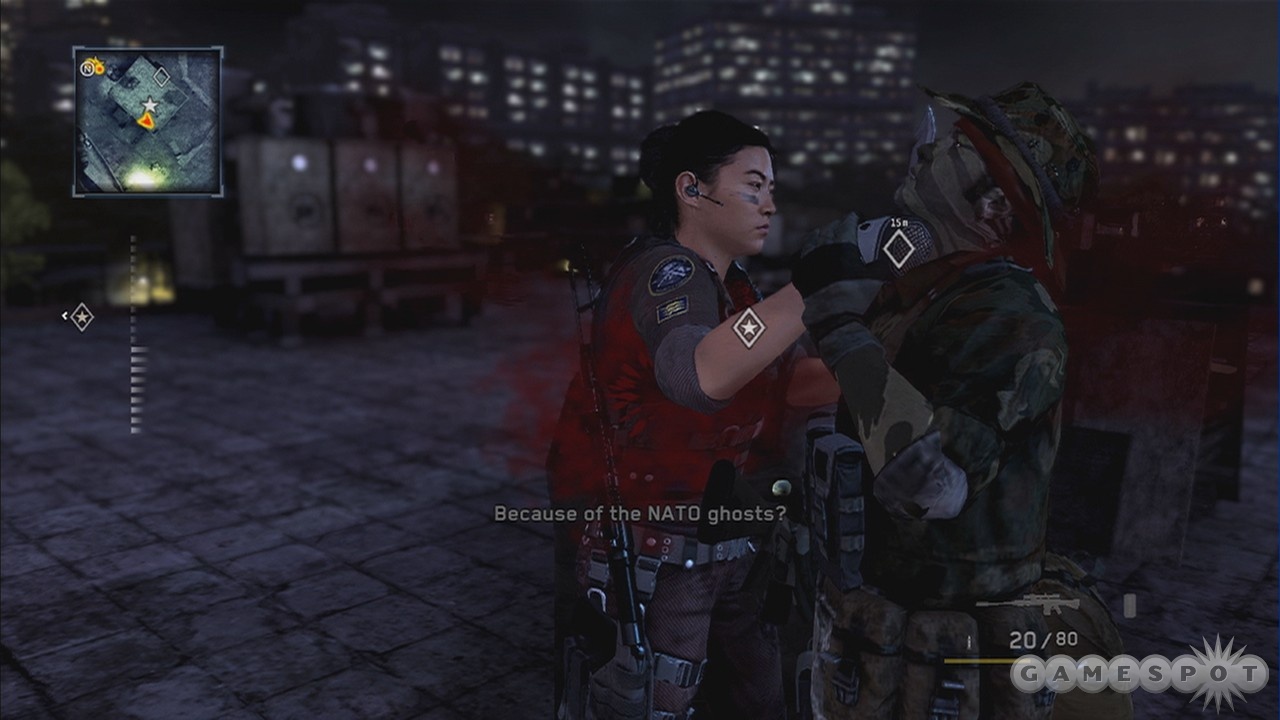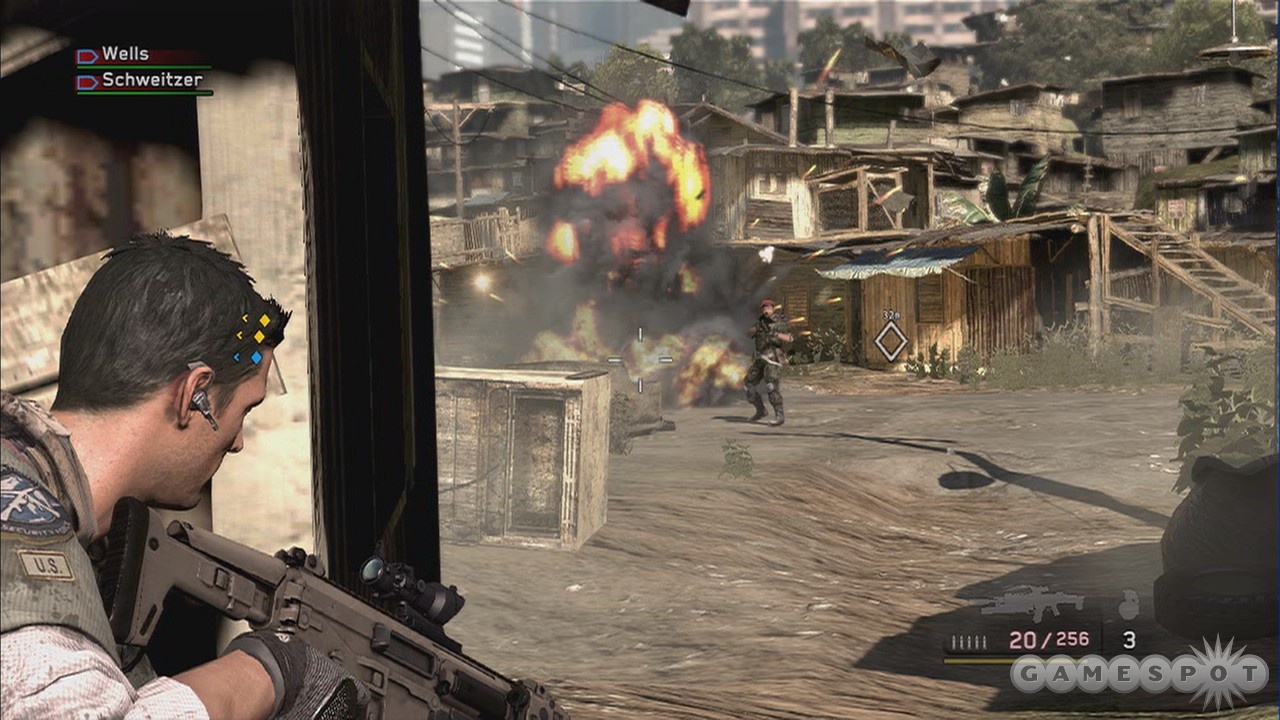Though it has a long history of bringing tactical third-person shooter action to Sony systems, the SOCOM series' debut on the PlayStation 3 failed to fully capture the excitement of its predecessors. Yet while SOCOM: Confrontation disappointed, SOCOM 4 delivers. The substantial campaign makes good use of setting and characters to create an engaging tour of duty in which squad tactics play a nicely balanced role. The online cooperative mode lets up to five players band together for stand-alone missions that can offer a serious challenge and engender a good sense of camaraderie. Those looking for competition will find plenty to like in the online multiplayer, where up to 32 players compete on large, well-designed maps in a variety of game types, including tense variants with the classic SOCOM rules that disallow respawning in the middle of a match. Both single- and multiplayer do have some issues, including imperfect stealth action, visual oddities, and intermittent network problems. Fortunately, these limitations don't spoil the fun, and SOCOM 4 makes it exciting to experience what each mode has to offer.
The campaign plays out in Southeast Asia and centers on the Strait of Malacca, a major shipping channel. You and your two Marine squadmates fight your way through the tropical countryside and into larger towns as you hunt a militant revolutionary leader who is planning to cripple the vital waterway. Early in the campaign, you link up with two Korean NATO soldiers who join your team, forming a second two-person squad. The story is fairly standard, following a typical narrative where not everything is as it seems, and offers few intriguing twists. Your team is made up of three unremarkable characters and two main protagonists who generate most of the story's appeal. The first is the American Ops Commander: the story behind his single-minded focus on the mission is an interesting facet, and you're not always sure whether you want to be on his side. The second is First Lieutenant Park Yoon-Hee, aka Forty Five: a confident and capable ally who mirrors the hard-nosed stubbornness of her male peers without losing her female identity. During intense conflicts, she isn't afraid to let the expletives fly, and her sparing use of four-letter words adds immediacy to these exchanges without turning her into another foul-mouthed stereotype. She's charismatic and expressive, offering a grounded portrayal of a female officer that stands in sharp contrast to those in comparable games. In both cutscenes and gameplay, she stands out while fitting right in (down to the occasional cliche one-liner), and this authenticity livens up the otherwise generic plot.
These two characters also reflect the two different styles of play that you encounter in the campaign. As the Ops Comm, you can command both two-person squads as you make your way through each level. Your allies do a decent job of following you, taking cover when under fire, and shooting enemies. They do commit blunders, like walking in front of you or taking cover on the wrong side of an object, and while this can sometimes mess up your stealth plans, these navigation issues aren't a big impediment. Still, your squads aren't truly effective unless you are issuing orders. Sending them to cover positions can help you ambush an incoming patrol or quietly surround an encampment, and ordering them to advance in the heat of combat can help put your enemies on their heels. Orders are easily issued with the directional pad and are limited to "move there" and "shoot that guy." You can also create a plan of attack by queuing up orders, or scrap any orders you've given by telling your squads to fall in, bringing them into a loose group around your position.
Though you can get away with just having allies in tow during some sections, your enemies don't make it easy. They are great shots and advance aggressively when they feel they have the advantage. You have to pull your weight when it comes to fending them off, using a variety of assault rifles, shotguns, machine guns, submachine guns, and sniper rifles, as well as a few different types of grenades. Though your arsenal lacks the auditory impact of many other modern shooters, it gets the job done quite well. Furthermore, you level up your guns as you use them in any game mode (cooperative and competitive included), unlocking better sights, suppressors, and underbarrel attachments. Yet despite your battlefield skill, you aren't deadly enough to go it alone. You might be able to get away with some cavalier tactics in the early going, but it isn't long before leaving yourself exposed to enemy fire will send you back to a checkpoint in a hurry. These squad-based missions strike a good balance--they spur you to issue squad orders but don't require you to micromanage. Incorporating your team into your attack plan is empowering, and it's very satisfying to fight your way through the tough skirmishes and ambushes.

The other style of campaign mission casts you as Forty Five. In these stealth missions, you must silently infiltrate and navigate enemy strongholds to gain intel and plant explosives. With two silenced weapons and the ability to stealth kill from behind, Forty Five must kill her enemies quietly or evade them silently. If one enemy raises the alarm, you fail the mission. Slinking through shadows and shrubbery provides some enjoyably tense moments, and finishing a mission cleanly is a satisfying feat. Unfortunately, there are some problems with the stealth action, including odd lighting that will occasionally show Forty Five in a virtual spotlight even though her stealth meter is pegged on "hidden." Getting a feel for exactly how silenced your silenced weapons are can also be tricky, and your ability to throw a shell casing and distract an enemy doesn't always work out the way it should. These issues can result in unwanted do-overs, but these sections are a nice change of pace, and the way they fit into the rest of the campaign is clever. After Forty Five infiltrates an area by night, you return during the daytime as the Ops Comm with a full fireteam. As you chart a new course through the environment, you recognize things from the night before, but the experience is refreshingly different. This gives the campaign a nice sense of continuity that helps build momentum throughout the eight or so hours it'll take you to complete it.
If you want to get some friends in on the action, SOCOM 4's cooperative mode lets up to five players team up online to tackle stand-alone missions that involve recovering info or killing enemy VIPs. You can tweak the settings to determine how skilled and how numerous your enemies are, and the difficulty really ramps up in the tougher matches. When you take on the hardest missions, your enemies are often aggressive to the point of wrecklessness, but their enthusiasm doesn't make it less fun or less challenging. Smoke grenades become essential to creating cover while you revive your incapacitated friends, and communicating with your team via headset or in-game waypoints can make the difference between success and failure. It's a shame there are only six maps and two objective types available for co-op play, because working as a team to take down a fierce enemy force is very satisfying. You can also play these scenarios single-player, but this is likely to appeal only to diehard challenge seekers and players grinding for weapon improvements.
However, not all the human players you encounter in SOCOM 4 are friendly--specifically, those players on the enemy team in the online competitive multiplayer mode. These matches support up to 32 players across four core game types: Suppression (team deathmatch), Uplink (capture the flag), Bomb Squad (defuse/defend bombs with one player boasting a bomb suit and improved weaponry), and Last Defense (when one team captures all three points, secondary target objectives are revealed). The first two are solid incarnations of these ubiquitous game types that succeed largely because of the impressive maps, which offer plenty of different routes and cover positions. Bomb Squad is basically team deathmatch until you locate the bomb technician, at which point it becomes a frantic hunt to kill the VIP. For the other team, it's a balance between escorting the bomb tech and trying not to reveal his position by all clustering around him. Last Defense usually begins as a tug-of-war as each team scrambles to hold the three objectives, and then becomes an all-out assault or defense, depending on your team's performance. Each of these modes can also be played with classic SOCOM rules that allow players only one life per match.
Even with the ability to respawn, SOCOM 4's multiplayer arena is a perilous place. A few shots to the body or a single headshot is all it takes to end a life, so finding cover and minimizing your exposure to enemy fire are important skills. Skirmishes are tense and exciting, doubly so when you know you won't respawn before the round is over. Though death is ever-present, the action isn't slow and methodical. You can get into some entrenched cover-based shootouts, but there's also a fair amount of running and gunning. As you navigate the spacious maps, you may see players scurrying off of ledges like cartoon characters or going prone in weird positions, and though they are consistent with the game mechanics, these visual oddities are strange to behold. We also ran into occasional network issues when, in a few matches, players lapsed out of sync with each other. In these cases, you might fill an enemy full of bullets and then watch him run away, only to get credit for the kill (or die yourself) half a minute later. Fortunately, these matches were the exception to the rule, and generally fixed themselves after the round ended.
From coastal fishing villages to fenced military installations, and from ramshackle slums to concrete urban jungles, SOCOM 4 takes you to a variety of locations throughout the campaign and multiplayer modes. The busy environments always feature a decent number of cover positions, and using the local flora to your advantage can also help. The foliage is diverse and the levels are full of nice details, though the visuals do have some rough edges and can sometimes feel a bit too cluttered. SOCOM 4 isn't a beautiful game, but its accompanying soundtrack is quite good. The driving orchestral score imbues the action with a motivating energy, while the percussive chimes and plucked strings of a gamelan interject to add a nice sense of place to the musical setting.

SOCOM 4 also supports the latest in gaming gimmickry--the PlayStation Move and stereoscopic 3D. Both the control scheme and the visual effect work quite well, providing properly equipped players with a fun way to put their purchases to good use. Yet no matter how you are equipped, SOCOM 4 has a lot to offer, despite its notable limitations. The entertaining campaign, challenging cooperative play, and frantic multiplayer firefights combine to provide tens of hours of enjoyable content, making SOCOM 4 a very appealing shooter.